Switchable Multifunctional Meta-Surface Composed by Dielectric-Metal Hybrid Antenna Array Architecture
Abstract
:1. Introduction
2. Materials and Methods
3. Results
4. Prospects for Future Work
5. Experimental Feasibility
6. Conclusions
Author Contributions
Funding
Acknowledgments
Conflicts of Interest
References
- Chen, H.T.; Taylor, A.J.; Yu, N.F. A review of metasurfaces: Physics and applications. Rep. Prog. Phys. 2016, 79, 076401. [Google Scholar] [CrossRef] [Green Version]
- Pendry, J.B.; Schurig, D.; Smith, D.R. Controlling electromagnetic fields. Science 2006, 312, 1780–1782. [Google Scholar] [CrossRef] [Green Version]
- Kamali, S.M.; Arbabi, E.; Arbabi, A.; Faraon, A. A review of dielectric optical metasurfaces for wavefront control. Nanophotonics 2018, 7, 1041–1068. [Google Scholar] [CrossRef]
- Yu, N.F.; Genevet, P.; Kats, M.A.; Aieta, F.; Tetienne, J.P.; Capasso, F.; Gaburro, Z. Light Propagation with Phase Discontinuities: Generalized Laws of Reflection and Refraction. Science 2011, 334, 333–337. [Google Scholar] [CrossRef] [PubMed] [Green Version]
- Lalbakhsh, A.; Afzal, M.U.; Esselle, K.P.; Smith, S. Design of an Artificial Magnetic Conductor Surface Using an Evolutionary Algorithm. In Proceedings of the 2017 International Conference on Electromagnetics in Advanced Applications, Verona, Italy, 11–15 September 2017; pp. 885–887. [Google Scholar]
- Lalbakhsh, A.; Afzal, M.U.; Esselle, K.P.; Zeb, B.A. Multi-objective Particle Swarm Optimization for the Realization of a Low Profile Bandpass Frequency Selective Surface. In Proceedings of the 2015 International Symposium on Antennas and Propagation, Hobart, Australia, 9–12 November 2015. [Google Scholar]
- Lalbakhsh, A.; Esselle, K.P. Directivity Improvement of a Fabry-Perot Cavity Antenna by Enhancing Near Field Characteristic. In Proceedings of the 2016 17th International Symposium on Antenna Technology and Applied Electromagnetics (ANTEM), Montreal, QC, Canada, 10–13 July 2016. [Google Scholar]
- Zhang, J.G.; Tian, J.P.; Li, L. Pantoscopic and temperature-controlled dual-band perfect absorber based on strontium titanate material. Mater. Res. Express 2018, 5, 065802. [Google Scholar] [CrossRef]
- Khan, M.I.; Khalid, Z.; Tahir, F.A. Linear and circular-polarization conversion in X-band using anisotropic metasurface. Sci. Rep. 2019, 9, 4552. [Google Scholar] [CrossRef] [Green Version]
- Levesque, Q.; Makhsiyan, M.; Bouchon, P.; Pardo, F.; Jaeck, J.; Bardou, N.; Dupuis, C.; Haidar, R.; Pelouard, J.L. Plasmonic planar antenna for wideband and efficient linear polarization conversion. Appl. Phys. Lett. 2014, 104, 111105. [Google Scholar] [CrossRef]
- Zhu, H.L.; Cheung, S.W.; Chung, K.L.; Yuk, T.I. Linear-to-Circular Polarization Conversion Using Metasurface. IEEE Trans. Antennas Propag. 2013, 61, 4615–4623. [Google Scholar] [CrossRef] [Green Version]
- Grady, N.K.; Heyes, J.E.; Chowdhury, D.R.; Zeng, Y.; Reiten, M.T.; Azad, A.K.; Taylor, A.J.; Dalvit, D.A.; Chen, H.T. Terahertz Metamaterials for Linear Polarization Conversion and Anomalous Refraction. Science 2013, 340, 1304–1307. [Google Scholar] [CrossRef] [Green Version]
- Zhu, R.; Qiu, T.; Wang, J.; Sui, S.; Hao, C.; Liu, T.; Li, Y.; Feng, M.; Zhang, A.; Qiu, C.W.; et al. Phase-to-pattern inverse design paradigm for fast realization of functional metasurfaces via transfer learning. Nat. Commun. 2021, 12, 2974. [Google Scholar] [CrossRef]
- Bian, K.; Lu, D.Q.; Hu, W. Dual-functional dielectric metasurface doublets. Opt. Express 2019, 27, 34259–34269. [Google Scholar] [CrossRef]
- Ding, F.; Chang, B.D.; Wei, Q.S.; Huang, L.L.; Guan, X.W.; Bozhevolnyi, S.I. Versatile Polarization Generation and Manipulation Using Dielectric Metasurfaces. Laser Photonics Rev. 2020, 14, 2000116. [Google Scholar] [CrossRef]
- Presutti, F.; Monticone, F. Focusing on bandwidth: Achromatic metalens limits. Optica 2020, 7, 624–631. [Google Scholar] [CrossRef]
- Chen, W.J.; Chen, R.; Zhou, Y.; Ma, Y.G. Broadband metamaterial absorber with an in-band metasurface function. Opt. Lett. 2019, 44, 1076–1079. [Google Scholar] [CrossRef]
- Li, C.H.; Fan, H.H.; Dai, Q.F.; Wei, Z.C.; Lan, S.; Liu, H.Y. Multipole Resonance in Arrays of Diamond Dielectric: A Metamaterial Perfect Absorber in the Visible Regime. Nanomaterials 2019, 9, 1222. [Google Scholar] [CrossRef] [Green Version]
- Liu, X.Y.; Fan, K.B.; Shadrivov, I.V.; Padilla, W.J. Experimental realization of a terahertz all-dielectric metasurface absorber. Opt. Express 2017, 25, 191–201. [Google Scholar] [CrossRef]
- Mao, M.; Liang, Y.Y.; Liang, R.S.; Zhao, L.; Xu, N.; Guo, J.P.; Wang, F.Q.; Meng, H.Y.; Liu, H.Z.; Wei, Z.C. Dynamically Temperature-Voltage Controlled Multifunctional Device Based on VO2 and Graphene Hybrid Metamaterials: Perfect Absorber and Highly Efficient Polarization Converter. Nanomaterials 2019, 9, 1101. [Google Scholar] [CrossRef] [Green Version]
- He, H.R.; Shang, X.J.; Xu, L.; Zhao, J.J.; Cai, W.Y.; Wang, J.; Zhao, C.J.; Wang, L.L. Thermally switchable bifunctional plasmonic metasurface for perfect absorption and polarization conversion based on VO2. Opt. Express 2020, 28, 4563–4570. [Google Scholar] [CrossRef] [PubMed]
- Dutta, R.; Mitra, D.; Ghosh, J. Dual-band multifunctional metasurface for absorption and polarization conversion. Int. J. RF Microw. Comput.-Aided Eng. 2020, 30, e22200. [Google Scholar] [CrossRef]
- Li, Y.; Li, H.Y.; Wang, Y.W.; Wang, Y.; Cao, Q.S. A Novel Switchable Absorber/Linear Converter Based on Active Metasurface and its Application. IEEE Trans. Antennas Propag. 2020, 68, 7688–7693. [Google Scholar] [CrossRef]
- Wang, J.Y.; Yang, R.C.; Ma, R.B.; Tian, J.P.; Zhang, W.M. Reconfigurable Multifunctional Metasurface for Broadband Polarization Conversion and Perfect Absorption. IEEE Access 2020, 8, 105815–105823. [Google Scholar] [CrossRef]
- Farahani, J.N.; Pohl, D.W.; Eisler, H.J.; Hecht, B. Single quantum dot coupled to a scanning optical antenna: A tunable superemitter. Phys. Rev. Lett. 2005, 95, 017402. [Google Scholar] [CrossRef] [PubMed]
- Klar, T.; Perner, M.; Grosse, S.; von Plessen, G.; Spirkl, W.; Feldmann, J. Surface-plasmon resonances in single metallic nanoparticles. Phys. Rev. Lett. 1998, 80, 4249–4252. [Google Scholar] [CrossRef]
- Matthews, D.R.; Summers, H.D.; Njoh, K.; Chappell, S.; Errington, R.; Smith, P. Optical antenna arrays in the visible range. Opt. Express 2007, 15, 3478–3487. [Google Scholar] [CrossRef]
- Das, P.; Mandal, K.; Lalbakhsh, A. Single-layer polarization-insensitive frequency selective surface for beam reconfigurability of monopole antennas. J. Electromagnet Wave 2020, 34, 86–102. [Google Scholar] [CrossRef]
- Lalbakhsh, A.; Afzal, M.U.; Hayat, T.; Esselle, K.P.; Mandal, K. All-metal wideband metasurface for near-field transformation of medium-to-high gain electromagnetic sources. Sci. Rep. 2021, 11, 9421. [Google Scholar] [CrossRef] [PubMed]
- Afzal, M.U.; Esselle, K.P.; Lalbakhsh, A. A Methodology to Design a Low-Profile Composite-Dielectric Phase-Correcting Structure. IEEE Antennas Wirel. Propag. Lett. 2018, 17, 1223–1227. [Google Scholar] [CrossRef]
- Alibakhshikenari, M.; Virdee, B.S.; See, C.H.; Abd-Alhameed, R.A.; Falcone, F.; Limiti, E. Surface Wave Reduction in Antenna Arrays Using Metasurface Inclusion for MIMO and SAR Systems. Radio Sci. 2019, 54, 1067–1075. [Google Scholar] [CrossRef]
- Czajkowski, K.M.; Antosiewicz, T.J. Electromagnetic Coupling in Optical Devices Based on Random Arrays of Dielectric Nanoresonators. J. Phys. Chem. C 2020, 124, 896–905. [Google Scholar] [CrossRef]
- Krasnok, A.E.; Miroshnichenko, A.E.; Belov, P.A.; Kivshar, Y.S. All-dielectric optical nanoantennas. Opt. Express 2012, 20, 20599–20604. [Google Scholar] [CrossRef]
- Sortino, L.; Zotev, P.G.; Mignuzzi, S.; Cambiasso, J.; Schmidt, D.; Genco, A.; Assmann, M.; Bayer, M.; Maier, S.A.; Sapienza, R.; et al. Enhanced light-matter interaction in an atomically thin semiconductor coupled with dielectric nano-antennas. Nat. Commun. 2019, 10, 5119. [Google Scholar] [CrossRef] [PubMed] [Green Version]
- Kuznetsov, A.I.; Miroshnichenko, A.E.; Brongersma, M.L.; Kivshar, Y.S.; Luk’yanchuk, B. Optically resonant dielectric nanostructures. Science 2016, 354, aag2472. [Google Scholar] [CrossRef] [PubMed] [Green Version]
- Li, W.Y.; Cheng, Y.Z. Dual-band tunable terahertz perfect metamaterial absorber based on strontium titanate (STO) resonator structure. Opt. Commun. 2020, 462, 125625. [Google Scholar] [CrossRef]
- Reagor, D.W.; Butko, V.Y. Highly conductive nanolayers on strontium titanate produced by preferential ion-beam etching. Nat. Mater. 2005, 4, 593–596. [Google Scholar] [CrossRef] [PubMed]
- Wang, B.X.; Zhai, X.; Wang, G.Z.; Huang, W.Q.; Wang, L.L. Frequency tunable metamaterial absorber at deep-subwavelength scale. Opt. Mater. Express 2015, 5, 227–235. [Google Scholar] [CrossRef]
- Singh, R.; Azad, A.K.; Jia, Q.X.; Taylor, A.J.; Chen, H.T. Thermal tunability in terahertz metamaterials fabricated on strontium titanate single-crystal substrates. Opt. Lett. 2011, 36, 1230–1232. [Google Scholar] [CrossRef] [PubMed] [Green Version]
- Arbabi, E.; Kamali, S.M.; Arbabi, A.; Faraon, A. Full-Stokes Imaging Polarimetry Using Dielectric Metasurfaces. ACS Photonics 2018, 5, 3132–3140. [Google Scholar] [CrossRef] [Green Version]
- Pors, A.; Nielsen, M.G.; Bozhevolnyi, S.I. Plasmonic metagratings for simultaneous determination of Stokes parameters. Optica 2015, 2, 716–723. [Google Scholar] [CrossRef] [Green Version]
- Quader, S.; Zhang, J.; Akram, M.R.; Zhu, W.R. Graphene-Based High-Efficiency Broadband Tunable Linear-to-Circular Polarization Converter for Terahertz Waves. IEEE J. Sel. Top. Quantum Electron. 2020, 26, 4501008. [Google Scholar] [CrossRef]
- Ratni, B.; de Lustrac, A.; Piau, G.P.; Burokur, S.N. Electronic control of linear-to-circular polarization conversion using a reconfigurable metasurface. Appl. Phys. Lett. 2017, 111, 214101. [Google Scholar] [CrossRef]
- Zheng, Q.; Guo, C.J.; Ding, J. Wideband Metasurface-Based Reflective Polarization Converter for Linear-to-Linear and Linear-to-Circular Polarization Conversion. IEEE Antennas Wirel. Propag. Lett. 2018, 17, 1459–1463. [Google Scholar] [CrossRef]
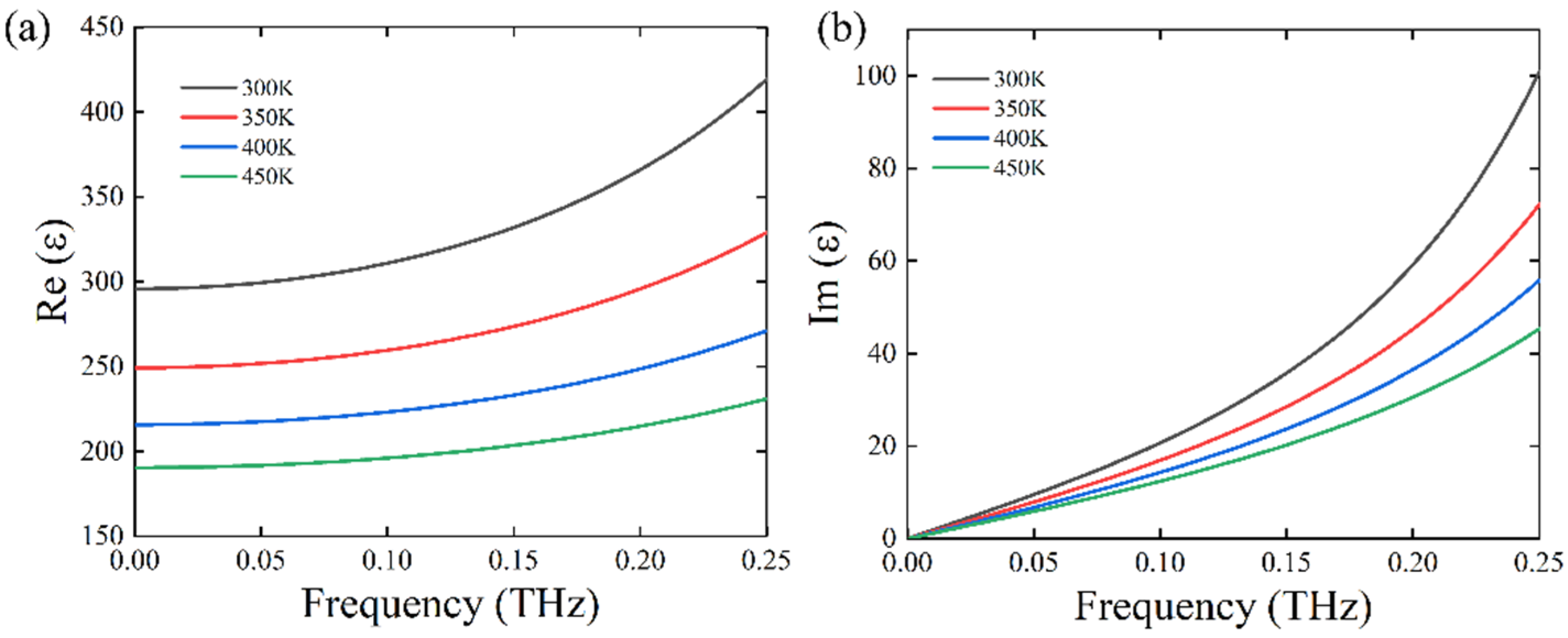
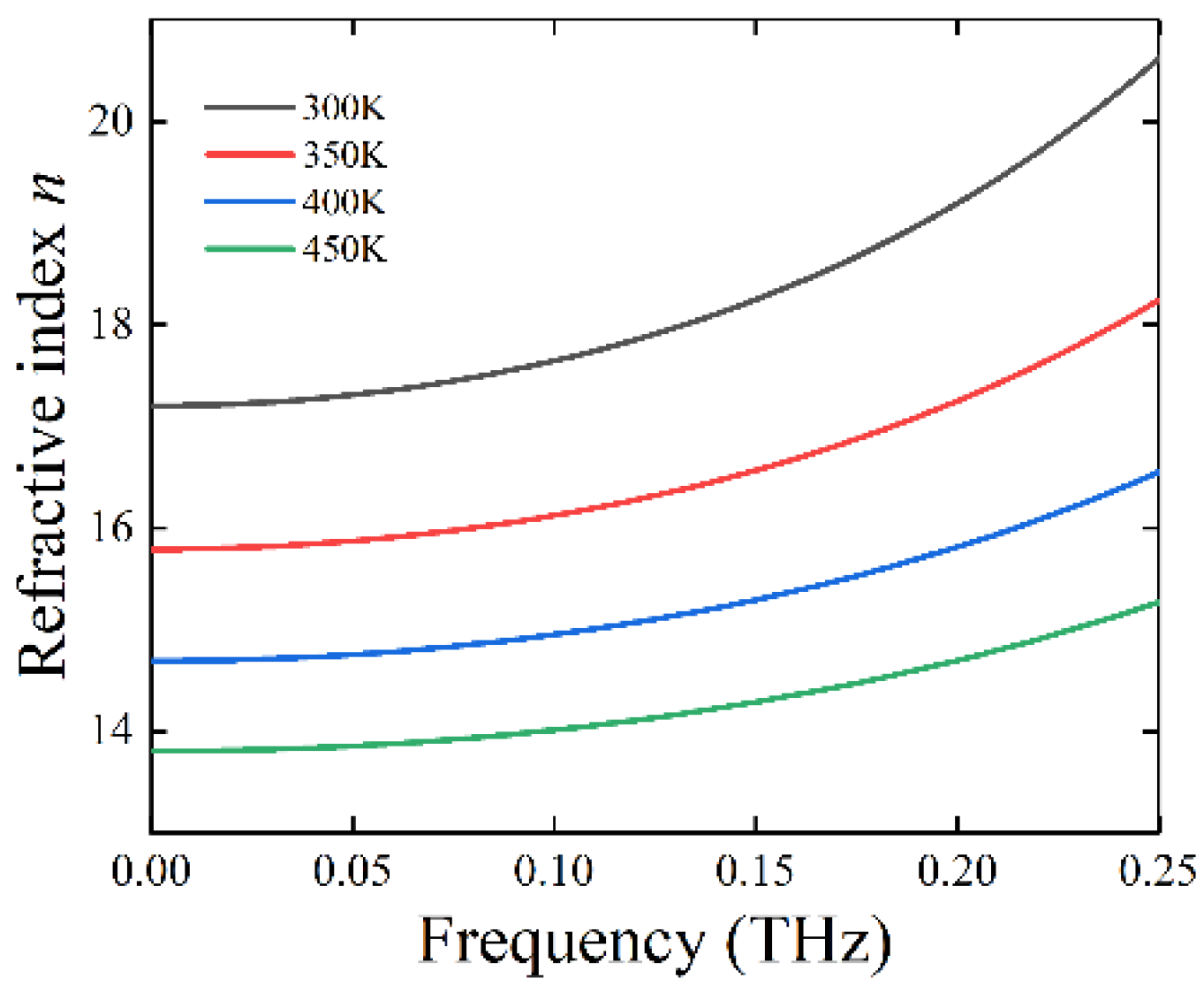

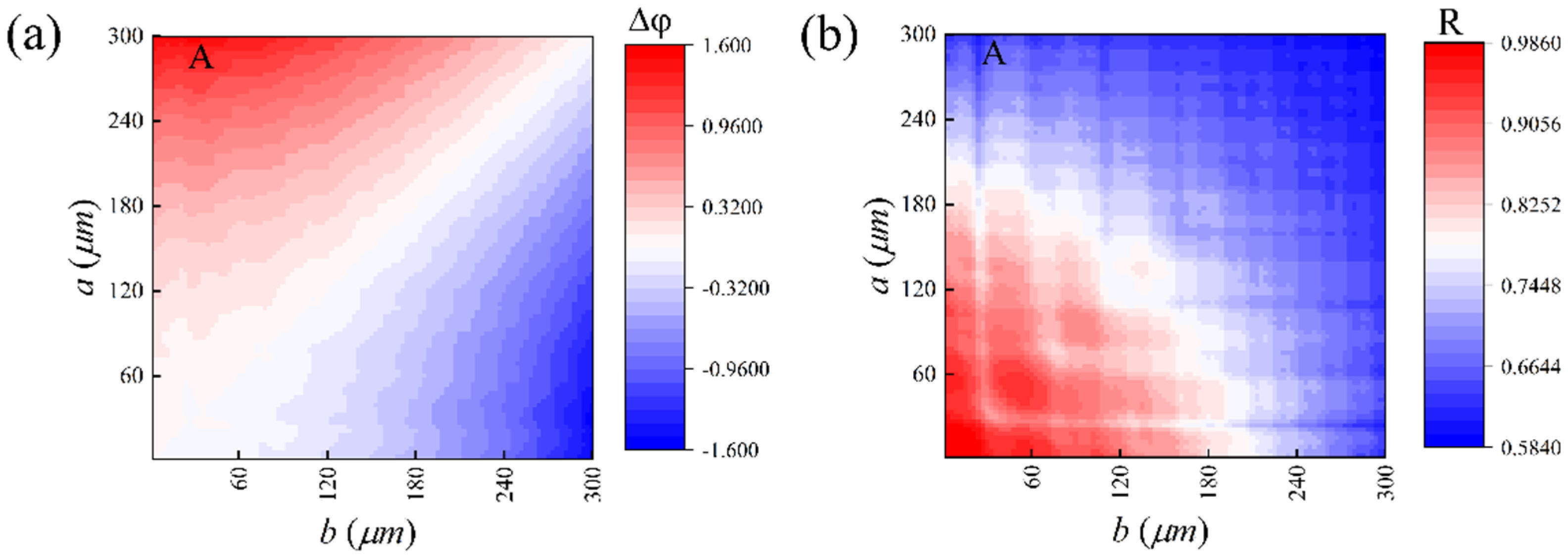
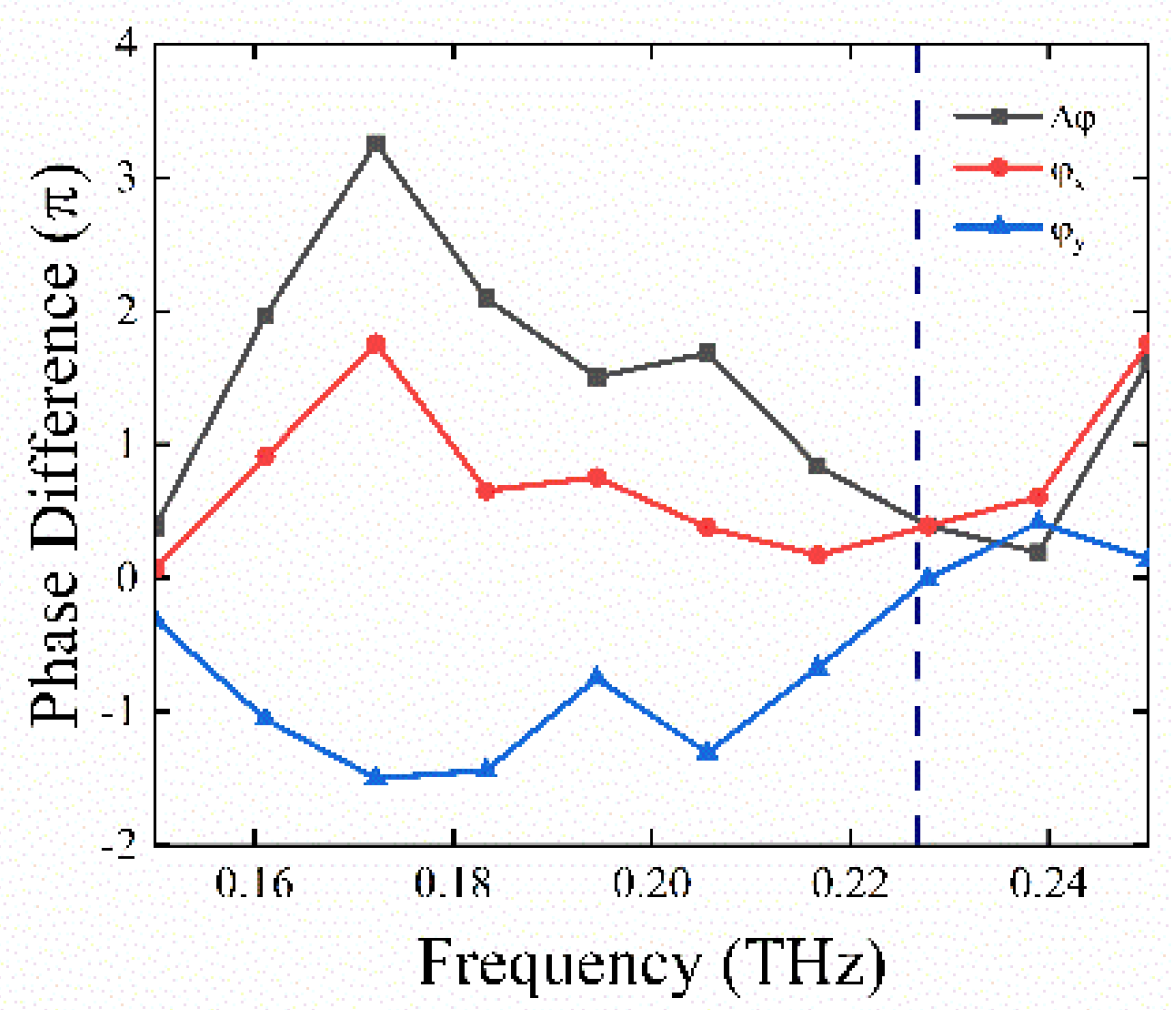
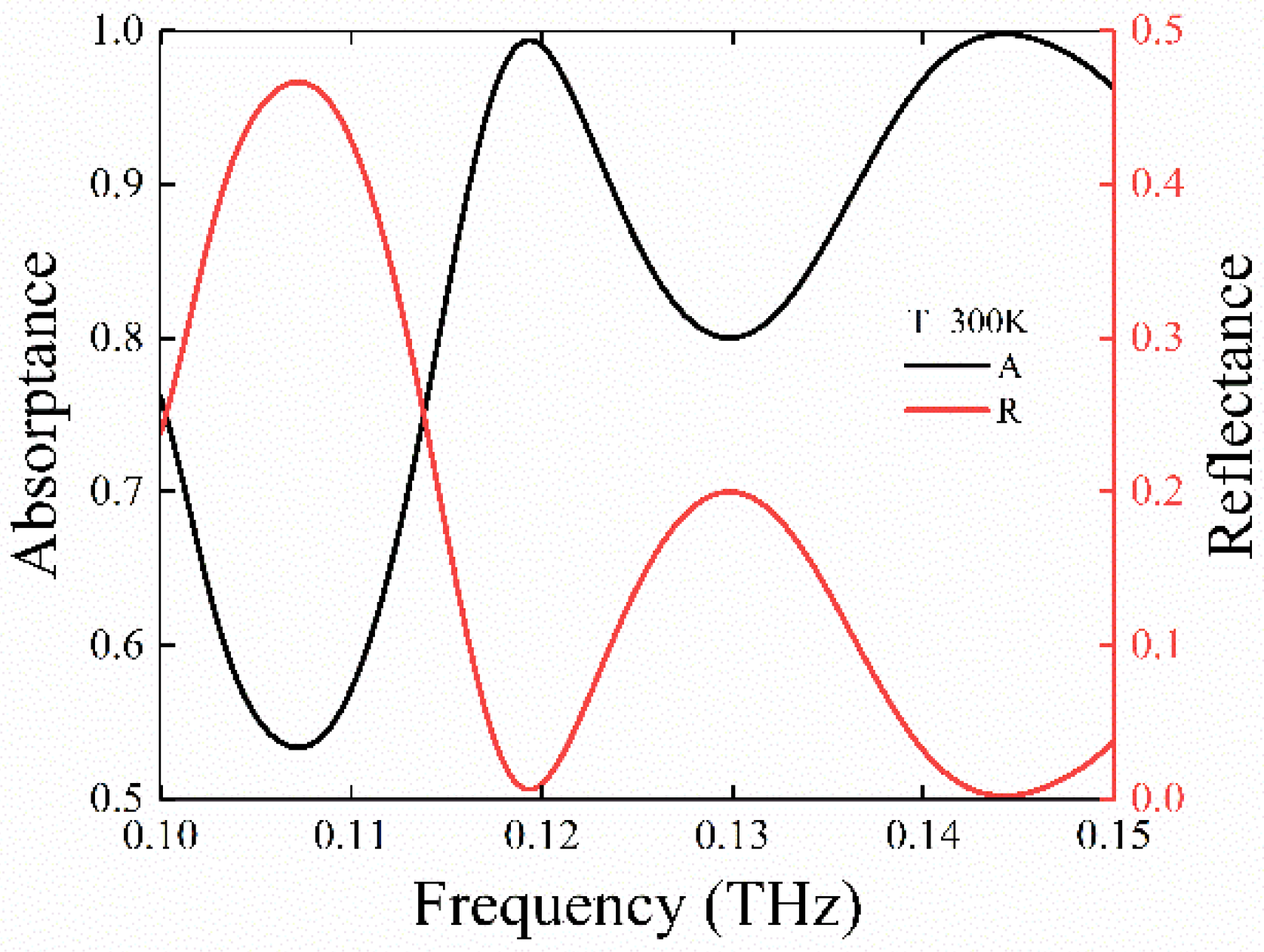
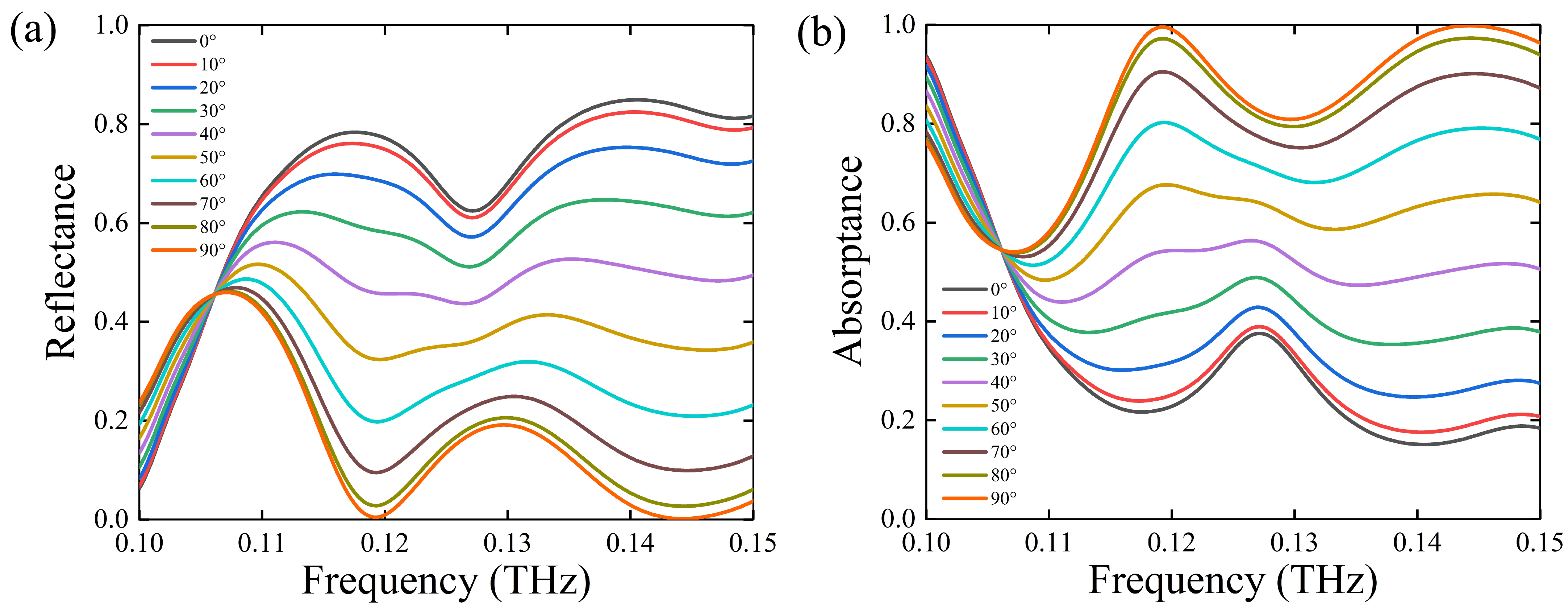
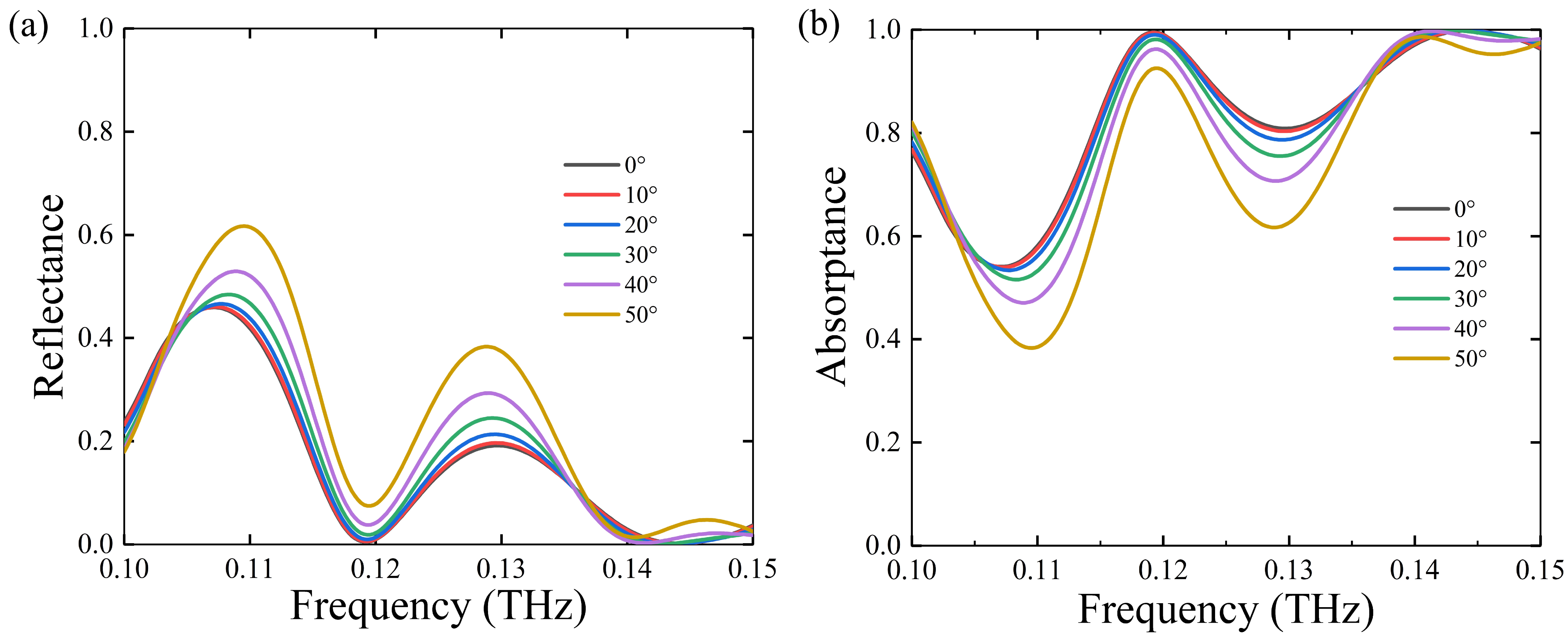

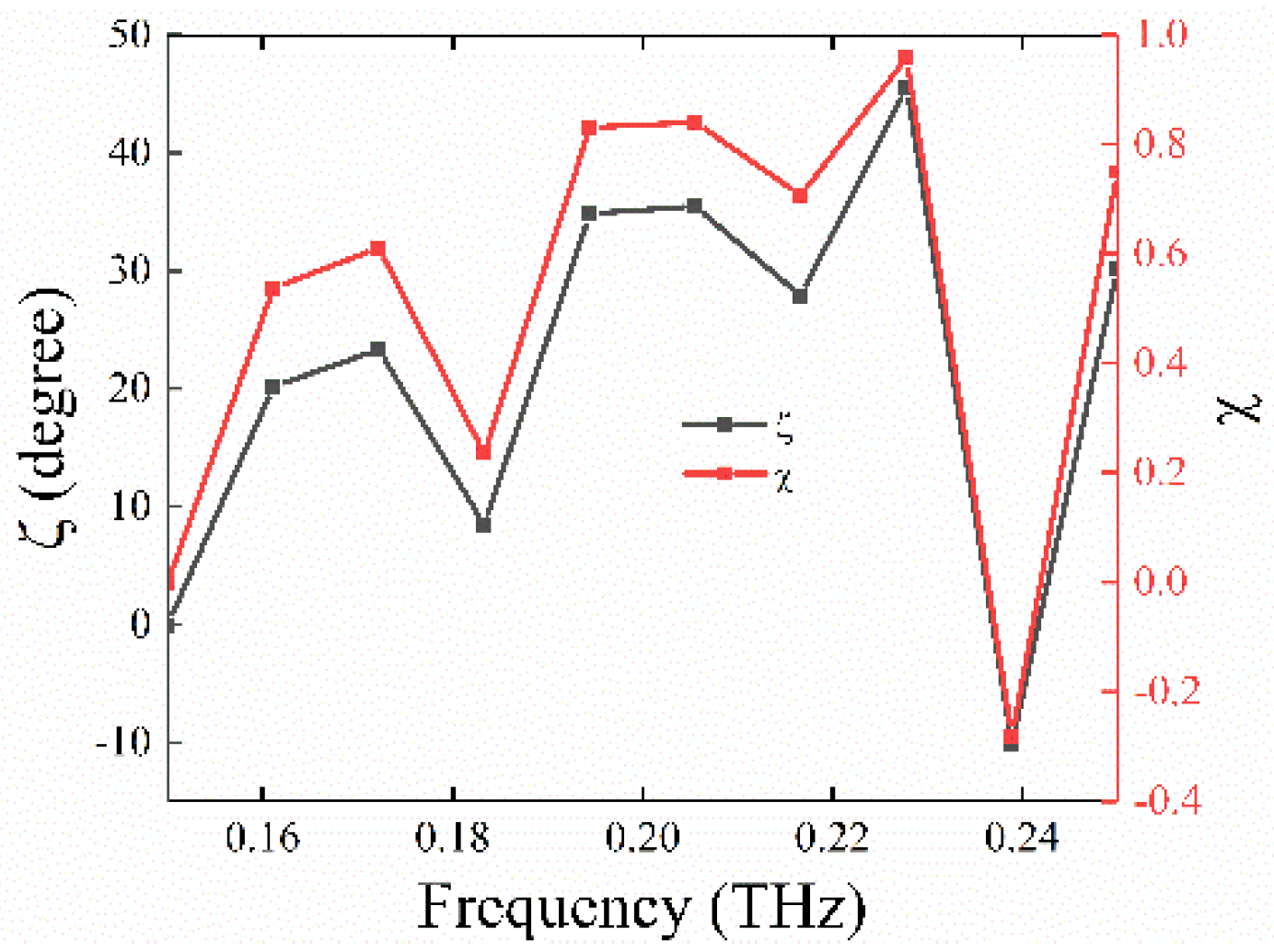


Publisher’s Note: MDPI stays neutral with regard to jurisdictional claims in published maps and institutional affiliations. |
© 2021 by the authors. Licensee MDPI, Basel, Switzerland. This article is an open access article distributed under the terms and conditions of the Creative Commons Attribution (CC BY) license (https://creativecommons.org/licenses/by/4.0/).
Share and Cite
Huang, Y.; Yang, J.; Zhang, Y.; Wei, Z.; Liu, H.; Guo, J. Switchable Multifunctional Meta-Surface Composed by Dielectric-Metal Hybrid Antenna Array Architecture. Nanomaterials 2021, 11, 2862. https://doi.org/10.3390/nano11112862
Huang Y, Yang J, Zhang Y, Wei Z, Liu H, Guo J. Switchable Multifunctional Meta-Surface Composed by Dielectric-Metal Hybrid Antenna Array Architecture. Nanomaterials. 2021; 11(11):2862. https://doi.org/10.3390/nano11112862
Chicago/Turabian StyleHuang, Yule, Jiaxin Yang, Ying Zhang, Zhongchao Wei, Hongzhan Liu, and Jianping Guo. 2021. "Switchable Multifunctional Meta-Surface Composed by Dielectric-Metal Hybrid Antenna Array Architecture" Nanomaterials 11, no. 11: 2862. https://doi.org/10.3390/nano11112862
APA StyleHuang, Y., Yang, J., Zhang, Y., Wei, Z., Liu, H., & Guo, J. (2021). Switchable Multifunctional Meta-Surface Composed by Dielectric-Metal Hybrid Antenna Array Architecture. Nanomaterials, 11(11), 2862. https://doi.org/10.3390/nano11112862






